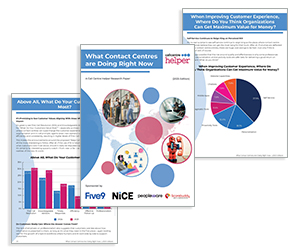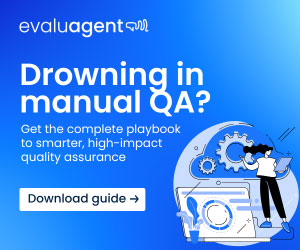Chatbots offer instant support and automate common tasks; they help customers get answers quickly, whether through text or voice interactions, without the need to wait for a human agent.
As technology advances, chatbots are becoming more sophisticated, learning from conversations and improving their ability to handle complex queries.
To find out more, we asked Steven Harris, Director, Strategic Clients at Odigo, Angela Lepelley, Sales Director – AI & Automation EMEA at Five9, Zach Morrison, Product Marketing Manager at Alvaria, to explain what a chatbot is.
Video: What Is a Chatbot?
Watch the video below to hear Steven, Angela and Zach explain what chatbots are:
With thanks to the following people for contributing to this video:
- Steven Harris, Director, Strategic Clients at Odigo
- Angela Lepelley, Sales Director – AI & Automation EMEA at Five9
- Zach Morrison, Product Marketing Manager at Alvaria
What Is a Chatbot?
A chatbot is a computer program designed to simulate human conversation, as Steven explains:
“A chatbot is a computer program that allows human beings to engage in a dialogue with a machine. They are most commonly used for customer service.
They are important where a customer doesn’t want to wait to speak to a contact centre agent, or when they want an answer to a question out-of-hours.”
It allows people to interact with a machine in a way that feels natural, whether through text or voice.
Contact centres use chatbots mainly for customer service, helping to reduce wait times and provide support outside of normal working hours.
“A chatbot is just basically AI that emulates human conversation with any sort of service on the web.
I think the most common example that comes to mind for most folks when they think of a chatbot are the small chat windows that are displayed on websites that they frequently visit.
Or they are sometimes embedded in messaging apps like Facebook Messenger, for example.” – Zach
Early chatbots were limited to text-based interactions, often found in small chat windows on websites.
“When I think about a chatbot, I think of chat and text-based interactions. And I think that’s how this technology sort of started maybe 20 years ago.
But now the term is really used across both text, whether it’s on web or mobile messaging applications, and on voice calls, what we call voice bots.” – Angela
Now, they are used in messaging apps, mobile applications, and voice calls, as Steven explains:
“Now the technology is developed to a point where we find them on apps and on social media. Chatbots can understand everyday language, they learn from experience, and they can even automate processes, and now they’re getting better at engaging in spoken conversation as well.”
Some chatbots, known as voice bots, engage in spoken conversation, allowing customers to interact as if they were speaking to a human.
Chatbots are sometimes called virtual agents, especially in contact centres, where they act as the first point of contact for customers.
They can answer questions, guide users through processes, and even complete tasks like booking appointments or processing orders.
“There are lots of interchangeable words here as well. We often hear them referred to as virtual agents in our industry. I think that’s really relevant.
We often see them deployed as virtual customer support agents in the contact centre, greeting customers, answering queries, and carrying out automated processes” – Angela
How Chatbots Are Evolving
With advances in artificial intelligence (AI), chatbots are becoming more effective at understanding natural language and learning from past interactions.
They can analyse customer data, personalise responses, and improve business efficiency. Their ability to operate 24/7 makes them a valuable resource, ensuring customers always have access to support.
“Chatbots, of course, are available all hours of the day, every day. Which is hugely beneficial. And they scan out oodles of data to help you and your business make better, more efficient decisions.” – Zach
If you are looking for more great insights from the experts, check out these next:
- A Great Way to Do a Coaching Session
- 10 Expert Tips for Call Centre Coaching
- Tips to Become the Best Call Centre Team Leader
- 10 Expert Tips for Quality Assurance (QA)
Author: Robyn Coppell
Reviewed by: Hannah Swankie
Published On: 4th Apr 2022 - Last modified: 25th Sep 2025
Read more about - Video, Alvaria, Angela Lepelley, Chatbots, Editor's Picks, Five9, Odigo, Steven Harris, Videos
















